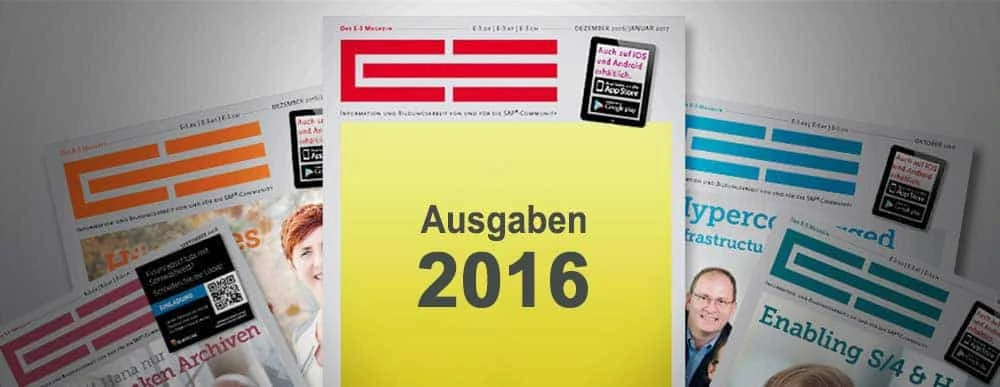On-premise infrastructures for Hana


Hana is the most talked-about SAP innovation of recent years - with more than 3,200 customers and more than 1,200 start-ups from 57 countries involved in building applications.
Hana is an in-memory relational database management system and application platform that can perform transactions and analytics on a single copy of data, providing real-time insights in a simplified IT landscape.
It can process both structured and unstructured data as well as data streams. It also includes advanced data processing functions such as searching and analyzing spatial, predictive, graphical and textual data.
Hana also offers ELT functions, data replication and the integration of Hadoop. Hana is neither a pure database nor a pure SAP application. It is a complete platform whose underlying infrastructure is a complex subject area.
As with any well-defined roadmap, several factors such as architectural, infrastructure and operationally related issues need to be considered when introducing new technologies - Hana is no exception.
To help our clients make the right decisions about architecture, technology and operational issues, Infosys Consulting developed the vendor assessment of on-premise infrastructures for Hana.
There are currently 13 providers for the Hana infrastructure with various concepts relating to CPU architecture, storage, converging infrastructures and scale-out or scale-up variants.
The deployment options now cover both appliance-like models, which are fully configured, delivered and supported by the hardware partner, as well as customized data center integrations (TDI), which provide a flexible way to attach certified Hana hardware to your own data centers and storage concepts.
TDI Mix and Match
Instead of a black box model, which is separate and isolated from the rest of the data center, customers are increasingly tending towards the TDI option, as they see it as a natural integration of Hana into existing data centers and operating models.
However, TDI implementations also generally provide certified hardware, but in a mix-and-match approach: the customer is no longer tied to the full stack of a provider, but can select certified blades or racks with certified storage.
As the deployment of Hana is very labor intensive, it is highly recommended to use professional services. A hardware check and reporting the results to SAP is no longer required for validation, but is recommended so that the customer can better understand the technical limits of the deployment.
The appliance approach entails a fully configured Hana installation with the necessary support from the hardware provider. However, depending on the service contract, the customer may, by default, still be responsible for patching and updating the appliance based on recommendations from the vendor.
We have analyzed a number of important aspects that are relevant for modern data centers: Management, implementation and integration into existing data centers, support, system flexibility and scalability, high availability and disaster tolerance in mission-critical environments.
Most customers are interested in hardware options based on supported memory, the scalability of functions or integration into a data center.
As Hana is increasingly gaining presence, some functions have also become standard in all solutions, such as high availability (integrated in Hana) or virtualization (also supported by SAP for multi-VM architectures).
However, not all standard functions are seamlessly integrated in Hana, neither in the storage (for example, BackupAPI requires a separate certification procedure, see http://scn.sap.com/docs/DOC-62799) nor in the solution (virtualization with VMWare - not all providers offer integrated tools to manage it).
Disaster tolerance, a must for an enterprise-level solution, is provided via storage support or Hana replication. Storage vendors offer synchronous or asynchronous replication with their own technologies, and some vendors offer white papers to help customers implement their solution (e.g. HP, Cisco/VCE, Fujitsu, Hitachi, SGI).
It is strongly recommended to follow up with Infosys Consulting or the storage provider for a suitable Hana setup. We have listed the maximum authorized nodes (servers) of each hardware provider.
The figures were heavily dependent on the memory technology used. The lack of internal memory usually means that there is only blade support. We have also noticed a tendency for hardware manufacturers who offer their own storage solutions to favor these and offer insufficient support for other systems.
IBM solutions - a case for itself
The IBM solutions fall under a special chapter as they do not follow the mainstream with x86 offerings. Instead, IBM decided to focus on its PowerPC line, with production support for Power8 and non-production systems also allowed on Power7.
Hana on PowerPC is not a native installation, but works on SLES or RHEL in VM containers (Power or KVM). The CPUs must be fully allocated to the Hana partitions (similar to x86 VMWare).
While x86 and Linux vendors usually choose xfs or nfs for their file systems, IBM concentrated on using its own GPFS (General Parallel File System).
GPFS enables easy scale-out from a node with internal storage so that the customer does not have to allocate external storage to the Hana landscape. Individual node installations can use xfs.
The right tool?
Compared to the question "what is the right tool for which job", there is no blanket answer to the question "who is faster". It all depends on the business case, the processes and the SAP applications.
As a construct, BWoH parallelizes better (i.e. scale-out) than a single full-memory machine, whereas SoH is clearly a scale-up solution. Based on geographic regions and strengths, it is understandable that some of the vendors offer global solutions, while others (especially APAC region vendors) mostly focus on their local countries or regions for support (NEC, Huawei, SGI). IBM remains true to its Power architecture.
Based on the information about the availability of specific Hana or data center functions, we analyzed the maturity and readiness of the various solutions.
Innovation does not automatically lead to market acceptance or support for implementation or integration. Market maturity, in turn, could lead to a slow development of innovations.
The key to a successful data center implementation of Hana is finding the right balance between innovation, support, documentation of various solutions, market readiness and also integration with SAP landscapes that are already in use.




